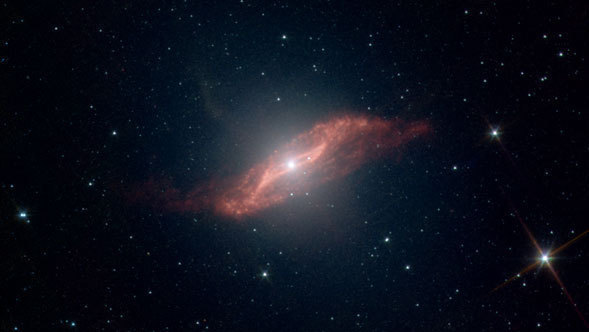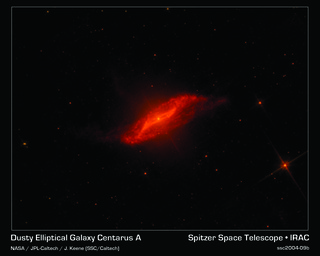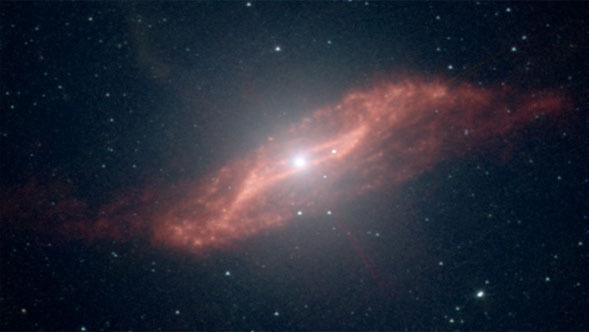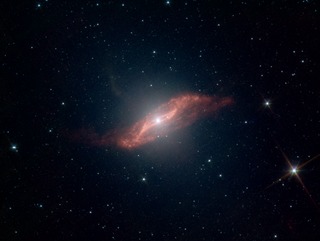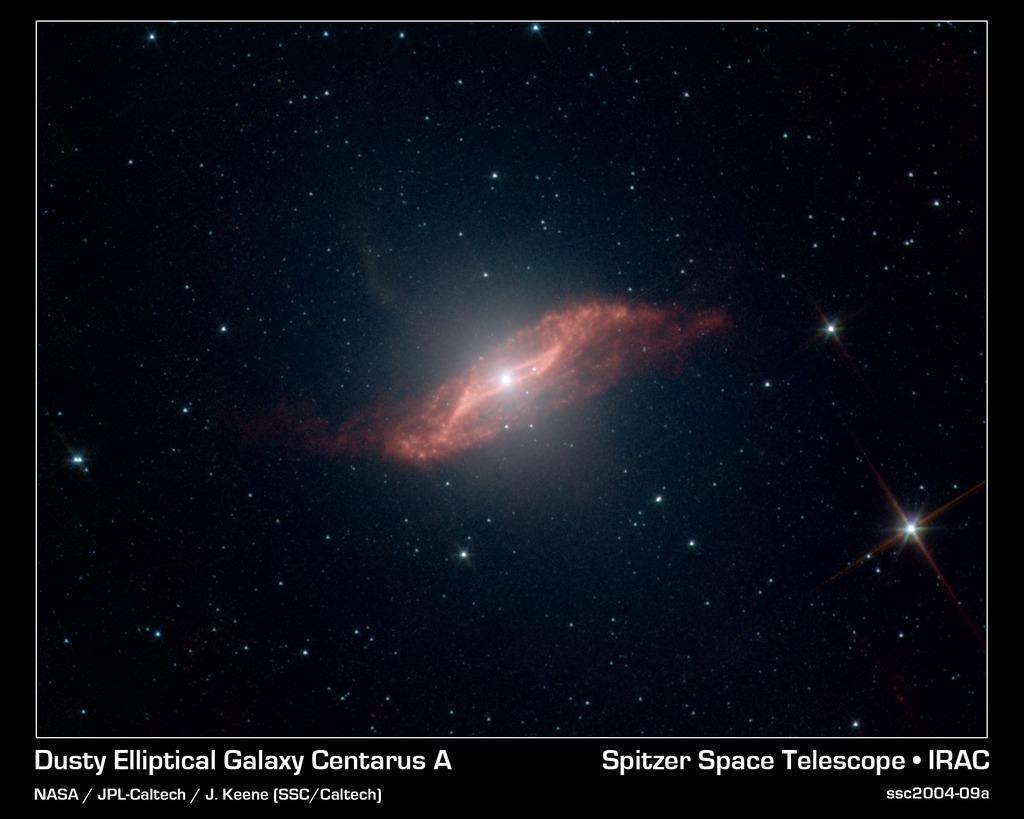
Credit: NASA/JPL-Caltech/J. Keene (SSC/Caltech)
Observation • June 1st, 2004 • ssc2004-09a
ssc2004-09a
This image taken by NASA's Spitzer Space Telescope shows in unprecedented detail the galaxy Centaurus A's last big meal: a spiral galaxy seemingly twisted into a parallelogram-shaped structure of dust. Spitzer's ability to see dust and also see through it allowed the telescope to peer into the center of Centaurus A and capture this galactic remnant as never before.
An elliptical galaxy located 10 million light-years from Earth, Centaurus A is one of the brightest sources of radio waves in the sky. These radio waves indicate the presence of a supermassive black hole, which may be "feeding" off the leftover galactic meal.
A high-speed jet of gas can be seen shooting above the plane of the galaxy (the faint, fuzzy feature pointing from the center toward the upper left). Jets are a common feature of galaxies, and this one is probably receiving an extra boost from the galactic remnant.
Scientists have created a model that explains how such a strangely geometric structure could arise. In this model, a spiral galaxy falls into an elliptical galaxy, becoming warped and twisted in the process. The folds in the warped disc create the parallelogram-shaped illusion.
About the Object
- Name
- Centaurus A • NGC 5128
- Type
- Galaxy > Type > Elliptical
- Galaxy > Type > Interacting
- Distance
- 11,000,000 Light Years
- Redshift
- 0.001825
Color Mapping
| Band | Wavelength | Telescope |
| Infrared | 3.6 µm | Spitzer IRAC |
| Infrared | 4.5 µm | Spitzer IRAC |
| Infrared | 5.8 µm | Spitzer IRAC |
| Infrared | 8.0 µm | Spitzer IRAC |
Astrometrics
- Position (J2000)
- RA =13h 25m 26.7s
- Dec = -43° 1' 6.7"
- Field of View
- 23.4 x 17.6 arcminutes
- Orientation
- North is 361.1° left of vertical
